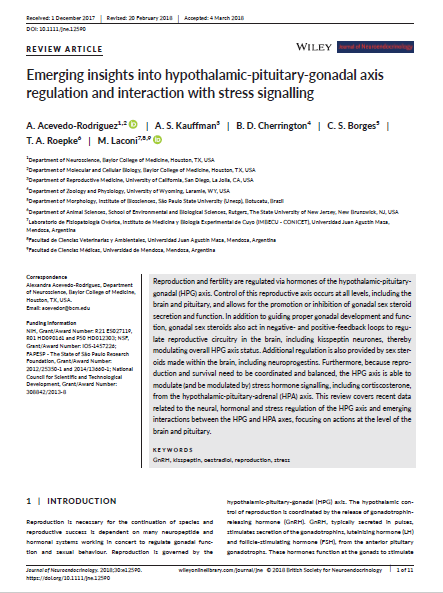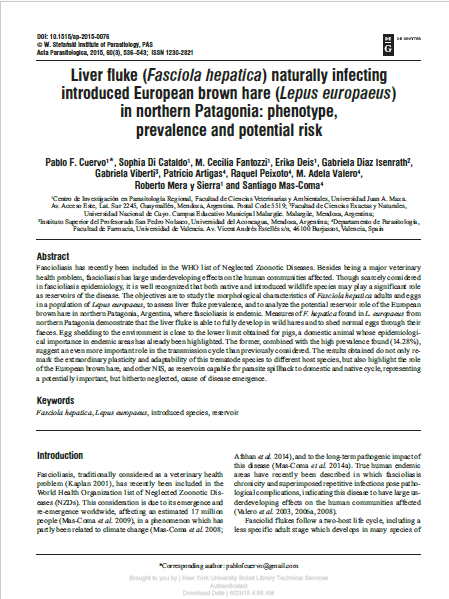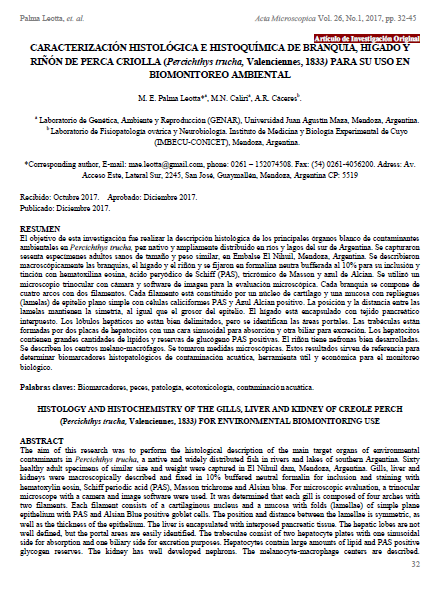Resultados de Investigación: Recent submissions
Now showing items 1-20 of 56
-
Inteligibilidad del discurso jurídico. Hacia la búsqueda de criterios de superación de la indeterminación de derecho
(2024)Proyecto de Investigación desarrollado en 2022 a 2024. Entrevista a su Directora. -
Impacto químico y sensorial de estrategias tecnológicas innovadoras para la crianza de vinos tintos; aplicación de microondas y chips de sarmientos
(2022-10)Los objetivos de este trabajo fueron: Analizar la factibilidad de aplicación de microondas en combinación con madera de sarmientos para la crianza de vinos Malbec y Bonarda y evaluar el impacto químico y sensorial en los productos finales, así como definir protocolos de utilización y gestionar su incorporación legal para uso industrial. La presentación de este proyecto se llevó a cabo el día 25 de octubre de 2022, bajo modalidad virtual, en marco del ''VI Seminario de Investigación'' del Consejo de Rectores de Universidades Privadas. -
Determinación de contaminantes antrópicos en el agua de riego del arbolado público lineal de la ciudad de Mendoza
(2022-10-25)El objetivo de éste trabajo es determinar los niveles de contaminantes antrópicos en el agua de riego del arbolado público lineal de la ciudad de Mendoza. Además pretende correlacionar los mismos con los indicadores de monitoreo de fitotoxicidad en dicho recurso hídrico. La presentación de este proyecto se llevó a cabo el día 25 de octubre de 2022, bajo modalidad virtual, en marco del ''VI Seminario de Investigación'' del Consejo de Rectores de Universidades Privadas. -
Biomonitoring of the hematological, biochemical and genotoxic effects of the mixture cypermethrin plus chlorpyrifos applications in bovines
(Science of the Total Environment Editorial, 2020-03-19)External antiparasitic agents applied in bovine production represent a risk to consumers of meat products, espe- cially if the conditions of their use are not strictly respected. The post-mortem control of residues in meat is an activity that must be updated and reinforced by the biomonitoring of live animals and the use of analytical tools to help identifying signs of early warning risks. The objective of the present study was to carry out a pre- slaughter biomonitoring approach in Aberdeen Angus cattle and crosses (n = 12) with the application of a com- mercial formulation of cypermethrin ... -
Epidemiological link between canine monocytic ehrlichiosis caused by Ehrlichia canis and the presence of Rhipicephalus sanguineus sensu stricto in Argentina
(Parasitology Research Editorial, 2021-01-08)In this work, we analyze data that support an epidemiological link between cases of canine monocytic ehrlichiosis (CME) by Ehrlichia canis and the presence of Rhipicephalus sanguineus sensu stricto as vector in an endemic area for this tick in Argentina. In a blood sample of a 1-year-old toy poodle with CME compatible clinical signs, which showed CME typical morulae in monocytes in Giemsa-stained blood smear, DNA of E. canis was detected by PCR. Further, DNA of E. canis was also detected in a female of R. sanguineus s.s. collected on the infected dog. Rhipicephalus sanguineus s.s. is the only ... -
Análisis de eventos extremos de precipitación que afectan la distribución de agua potable en el Gran Mendoza: variabilidad espacio-temporal y forzantes atmosféricos asociados
(2020-09)Disertación realizada en el marco del proyecto de investigación Convocatoria 2019 dirigido por el Dr. Juan Rivera: ANÁLISIS DE EVENTOS EXTREMOS DE PRECIPITACIÓN QUE AFECTAN LA DISTRIBUCIÓN DE AGUA POTABLE EN EL GRAN MENDOZA: VARIABILIDAD ESPACIO-TEMPORAL Y FORZANTES ATMOSFÉRICOS ASOCIADOS. Expositora: Dra. Celeste Mulena. -
Entrevista radial: Publicidad creativa
(FM 100.9 Estación del SOL, 2016-06-22)Entrevista radial realizada por Morena Esquivel en radio Estación del Sol 100.9 (https://estaciondelsol.elsol.com.ar/) a la directora de proyecto Lizzet Vejling acerca de la investigación realizada en Creatividad Publicitaria en Universidad Juan Agustín Maza junto a equipo de investigación. -
Report of Amblyomma parvitarsum infesting goats in Midwestern Argentina
(Comité editorial Veterinary Parasitology, 2018-09-24)Adult ticks were collected from goats on September 2012 in the locality of Trintrica (35° 17′ 19″ S - 68° 44′ 6″ W, 1430 m.a.s.l.), Mendoza, Argentina. The specimens were identified as seven females and three males of Amblyomma parvitarsum Neumann, 1901. This record represents the new occurrence of A. parvitarsum in the province of Mendoza, as well as the first report of the parasitism in goats along the geographical range of A. parvitarsum. -
Reference values for acetyl and butyrylcholinesterases in cattle under actual management conditions, hepatic and renal function by application of chlorpyrifos
(Comité editorial Journal of Environmental Science and Health, 2018-01-02)Chlorpyrifos is an anticholinesterase organophosphate insecticide widely used in Argentina in the production of food derived from animal, fruit and horticultural origin and is reported as a residue within these products. Local reference values for acetyl and butyrylcholinesterase were determined in Aberdeen Angus bovine and cross bred cattle (n D 25), a requirement to be able to evaluate toxicity of commercial organophosphate and carbamate formulations. The activity of cholinesterase enzymes presented an overall mean of 2,183.00 § 485.6 IU L¡1 for erythrocyte acetylcholinesterase and 203.1 § ... -
Potential risks of dietary exposure to chlorpyrifos and cypermethrin from their use in fruit/vegetable crops and beef cattle productions.
(Comité editorial Environ Monitoring and Assessment, 2018-04-18)The active ingredients (a.i.) used as pesticides vary across regions. Diet represents the main source of chronic exposure to these chemicals. The aim of this study was to look at the pesticides applied in fruit, vegetable, and beef cattle productions in Mendoza (Argentina), to identify those that were simultaneously used by the three production systems. Local individuals (n = 160), involved in these productions, were interviewed. Glyphosate was the a.i. most often used by fruit-vegetable producers, and ivermectin by beef cattle producers. Chlorpyrifos (CPF) and cypermethrin (CYP) were the only ... -
Evaluation of the genotoxic potential of cypermethrin, chlorpyrifos and their subsequent mixture, on cultured bovine lymphocytes
(Comité editorial Chemosphere Journal, 2019-11-09)Cypermethrin (CYP) and chlorpyrifos (CPF) are insecticides/parasiticides used in the production of fruits, vegetables and beef cattle. These substances or their metabolites are frequently reported as residues in food, whose consumption in a diet implies a genotoxic risk. The potential for chronic toxicity of CYP and CPF is unclear, and only a few genotoxicological evaluations based on their mixture have been performed. The aim of this study was to evaluate the genotoxic potential of CYP, CPF and CYP þ CPF in five concentrations, from 5.9 to 175 mg/mL, on bovine lymphocytes. By means of the ... -
Pseudobutyrivibrio xylanivorans adhesion to epithelial cells
(Comité editorial Anaerobe Journal, 2019-01-05)The ruminal bacteria Pseudobutyrivibrio xylanivorans strain 2 (P. xylanivorans 2), that mediates the digestion of plant fiber, is considered an attractive candidate for probiotics. Adherence to the epithelium of the digestive tract of the host is one of the major requirements for probiotics. In this study, we assessed the adhesion of P. xylanivorans 2 to SW480 cells and characterized this process utilizing multiple microscopy approaches. Our results indicate that a multiplicity of infection of 200 CFU/cell allows the highest bacteria to cell binding ratio, with a lower percentage of ... -
Emerging insights into hypothalamic-pituitary- gonadal axis regulation and interaction with stress signalling.
(Comité editorial Journal of Neuroendocrinology, 2018-10-30)Reproduction and fertility are regulated via hormones of the hypothalamic-pituitary-gonadal (HPG) axis. Control of this reproductive axis occurs at all levels, including the brain and pituitary, and allows for the promotion or inhibition of gonadal sex steroid secretion and function. In addition to guiding proper gonadal development and function, gonadal sex steroids also act in negative-and positive-feedback loops to regulate reproductive circuitry in the brain, including kisspeptin neurones, thereby modulating overall HPG axis status. Additional regulation is also provided by sex steroids made ... -
Liver fluke (Fasciola hepatica) naturally infecting introduced European brown hare (Lepus europaeus) in northern Patagonia: phenotype, prevalence and potential risk
(Comité editorial Acta Parasitologica, 2015-06-23)Fascioliasis has recently been included in the WHO list of Neglected Zoonotic Diseases. Besides being a major veterinary health problem, fascioliasis has large underdeveloping effects on the human communities affected. Though scarcely considered in fascioliasis epidemiology, it is well recognized that both native and introduced wildlife species may play a significant role as reservoirs of the disease. The objectives are to study the morphological characteristics of Fasciola hepatica adults and eggs in a population of Lepus europaeus, to assess liver fluke prevalence, and to analyze the potential ... -
Unusual presence of Ornidia robusta (Diptera: Syrphidae) causing pig myiasis in Argentina.
(Comité editorial Parasitology Research, 2015-10-09)Myiasis is caused by dipterous larvae from the Calliphoridae, Sarcophagidae, Muscidae, Cuterebridae, and Syrphidae families. In this work, Cochliomyia hominivorax, Chrysomya megacephala, and Ornidia robusta were identified causing vulva, ear, and leg myiasis in pigs in Tucuman province, northwestern Argentina. The report of the presence of C. hominivorax and C. megacephala is very important due to their role as myiasis-causing and disease vectors. The occurrence of Ornidia robusta is remarkable, since it constitutes the first record of myiasis in general and of myiasis in pigs in particular. ... -
Caracterización histológica e histoquímica de branquia, hígado y riñón de perca criolla ( Percichthys trucha, Valenciennes, 1833 ) para su uso en biomonitoreo ambiental
(Comité editorial Acta microscópica, 2017-12)El objetivo de esta investigación fue realizar la descripción histológica de los principales órganos blanco de contaminantes ambientales en Percichthys trucha, pez nativo y ampliamente distribuido en ríos y lagos del sur de Argentina. Se capturaron sesenta especímenes adultos sanos de tamaño y peso similar, en Embalse El Nihuil, Mendoza, Argentina. Se describieron macroscópicamente las branquias, el hígado y el riñón y se fijaron en formalina neutra bufferada al 10% para su inclusión y tinción con hematoxilina eosina, ácido peryódico de Schiff (PAS), tricrómico de Masson y azul de Alcian. Se ... -
Seasonal changes in feed intake, diet digestibility and diet composition by lactating and non-lactating goats browsing in a semi-arid rangeland of Argentina
(Comité editor Grass and Forage Science, 2018-10-01)We determined the seasonal nutrient and secondary compound intake, in vivo diet digestibility (DD) and diet species composition of goats in different physiological states in a desert rangeland of Argentina. During the wet and the dry seasons, 24 mature female Creole goats (six non-lactating, non-pregnant and six lactating in each season) were used in a 2 × 2 factorial design. Diet botanical composition, DD and dry-matter intake (DMI) were estimated by the combined use of visual observation, microhistological analyses of faecal samples and n-alkane technique. Browse species dominated the goats’ ... -
Effect of the length of the suckling period and dietary energy intake in lactation on the duration of postpartum anestrus in Creole goats.
(Comité editorial Small Ruminant Research, 2016-04-16)The objective of this study was to determine the effect of the length of the suckling period and the dietary energy level on the duration of postpartum anestrus in Creole goats. Twenty-eight multiparous pregnant goats (bodyweight BW 39.9 ± 6.4 kg; mean ± SEM) each bearing a single fetus were used in a 2 suckling period (30 vs. 60 d) × 2 levels of energy intake (low (L) vs. high (H)) factorial design. Kids were separated from their dams 3 d after birth and then suckled twice per day until weaned at 30 or 60 d postpartum. Dams weaned at 30 d postpartum were hand milked for the next 30 d. Goats ... -
Diet mixing and condensed tannins help explain foraging preferences by Creole goats facing the physical and chemical diversity of native woody plants in the central Monte desert (Argentina).
(Comité editorial Animal Feed Science and Technology, 2016-02-26)The aim of this study was to understand the benefit of diet mixing for Creole goats grazingnative forage species in the central Monte desert of Argentina and the drivers of preferencein the mixed diet. To achieve this goal, cafeteria-style experiments were conducted withthirty female Creole goats (2 years old; 44 ± 1.4 kg) and forage species that are typicallyingested by goats in this region: Two tanniniferous (Tricomaria usillo, Mimosa ephedroides)and three non-tanniniferous shrubs (Prosopis flexuosa, Capparis atamisquea, Atriplex lampa).In Experiment 1, goats were assigned to three groups (n ... -
Analysis of the rumen bacterial diversity of goats during shift from forage to concentrate diet.
(Comité editor Journal Anaerobe, 2016-07-12)High-grain feeding used in the animal production is known to affect the host rumen bacterial community, but our understanding of consequent changes in goats is limited. This study was therefore aimed to evaluate bacterial population dynamics during 20 days adaptation of 4 ruminally cannulated goats to the high-grain diet (grain: hay e ratio of 40:60). The dietary transition of goats from the forage to the high-grain-diet resulted in the significant decrease of rumen fluid pH, which was however still higher than value established for acute or subacute ruminal acidosis was not diagnosed in studied ...





























